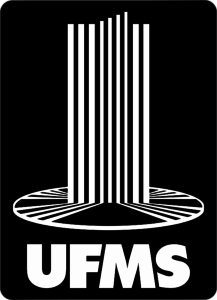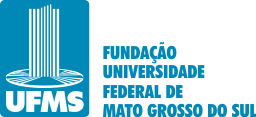Use este identificador para citar ou linkar para este item:
https://repositorio.ufms.br/handle/123456789/4852| Tipo: | Dissertação |
| Título: | Variações morfométricas de Ectatomma permagnum Forel, 1908 (Formicidae: Ectatomminae) sob o efeito de fatores ambientais no Cerrado |
| Autor(es): | ANNE GABRIELLE VELICK SANDIM |
| Primeiro orientador: | Rodrigo Aranda |
| Resumo: | O trabalho tem como objetivo avaliar as possíveis alterações morfológicas de diferentes populações de Ectatomma permagnum ocorridas em resposta às alterações ambientais em fragmentos urbanos de Cerrado, avaliando se i) existe a proporção do tamanho das pernas em relação ao corpo de acordo com a teoria do tamanho-grão, ii) comparar medidas morfométricas das pernas e do corpo para verificar se a proporção é influenciada por variáveis ambientais responsáveis pela formação e heterogeneidade da serapilheira, e iii) verificar se a heterogeneidade ambiental influencia no tamanho das características morfológicas utilizadas para forrageamento e predação. Foram utilizados 844 indivíduos de E. permagnum de quatro fragmentos urbanos com diferentes tipos de vegetação de Cerrado, onde 11 medidas morfológicas da cabeça, corpo e pernas foram mensuradas para descrever a morfometria, bem como sete variáveis ambientais das áreas para caracterizar o ambiente. Para a análise de dados foram utilizadas i) a medida do Weber e medida total da perna comparando-se a média dos valores encontrados, realizado test-t e regressão linear para confirmar a relação de alometria ii) NMDS e MANOVA para diferenciar as áreas considerando as características morfométricas. iii) PCA para analisar a contribuição de cada característica para diferenciar os fragmentos e iv) para verificar a influência das variáveis ambientais nas características morfológicas foi realizado CCA. O comprimento total da perna em relação ao comprimento de Weber, corroborou com a hipótese de tamanho-grão. Considerando os resultados da MANOVA, existe diferença significativa entre os fragmentos quando comparado com todas as variáveis morfométricas. Nos resultados da análise de PCA, as características morfológicas que mais contribuíram para a distinção entre os grupos de fragmentos, foram o tamanho do fêmur e o comprimento do Weber. A correspondência canônica não apresentou resultado significativo entre os eixos, mostrando que a heterogeneidade das áreas amostradas não influencia os tamanhos das características mensuradas no trabalho. Nosso trabalho também demonstrou que as variáveis ambientais não influenciam significantemente no tamanho das estruturas, podemos supor que outros fatores podem agir juntamente às variáveis ambientais sobre a morfometria dos indivíduos. Os baixos valores de desvio padrão para as características dos indivíduos do Segredo, mostram que não há uma dispersão das medidas como nas outras áreas, mostrando uma homogeneidade no tamanho dos caracteres morfológicos. Concluímos que indivíduos de E. permagnum corroboram com a hipótese de tamanho-grão, confirmando assim uma alometria positiva para a espécie. Nossas medidas morfométricas não apresentaram influência significativa das variáveis ambientais, levando a crer que outros fatores internos e externos também podem ser importantes modificar o ambiente de cada fragmento, assim selecionando os caracteres dos indivíduos. |
| Abstract: | The objective of this work is to evaluate the possible morphological changes of different populations of Ectatomma permagnum that occurred in response to environmental changes in urban fragments of Cerrado, evaluating whether i) there is a proportion of the size of the legs in relation to the body according to the size theory -grain, ii) compare morphometric measurements of legs and body to verify if the proportion is influenced by environmental variables responsible for litter formation and heterogeneity, and iii) verify if environmental heterogeneity influences the size of morphological characteristics used for foraging and predation . We used 844 individuals of E. permagnum from four urban fragments with different types of Cerrado vegetation, where 11 morphological measurements of the head, body and legs were measured to describe the morphometry, as well as seven environmental variables of the areas to characterize the environment. For data analysis, i) Weber measurement and total leg measurement were used, comparing the average of the values found, performed t-test and linear regression to confirm the allometry relationship ii) NMDS and MANOVA to differentiate the areas considering the morphometric features. iii) PCA to analyze the contribution of each characteristic to differentiate the fragments and iv) to verify the influence of environmental variables on morphological characteristics, CCA was performed. The total leg length in relation to Weber's length corroborated the grain-size hypothesis. Considering the MANOVA results, there is a significant difference between the fragments when compared with all morphometric variables. In the results of the PCA analysis, the morphological characteristics that most contributed to the distinction between the groups of fragments were the size of the femur and the length of the Weber. The canonical correspondence did not present a significant result between the axes, showing that the heterogeneity of the sampled areas does not influence the sizes of the characteristics measured in the work. Our work also showed that environmental variables do not significantly influence the size of structures, we can assume that other factors can act together with environmental variables on the morphometry of individuals. The low values of standard deviation for the characteristics of the individuals of the Secret show that there is no dispersion of measurements as in other areas, showing a homogeneity in the size of the morphological characters. We conclude that E. permagnum individuals corroborate the grain-size hypothesis, thus confirming a positive allometry for the species. Our morphometric measurements did not show a significant influence of environmental variables, leading us to believe that other internal and external factors may also be important to modify the environment of each fragment, thus selecting the characters of the individuals. |
| Palavras-chave: | Formigas Generalistas Fragmentos Mirmecologia Morfologia Regeneração natural Tamanho-Grão. |
| País: | Brasil |
| Editor: | Fundação Universidade Federal de Mato Grosso do Sul |
| Sigla da Instituição: | UFMS |
| Tipo de acesso: | Acesso Aberto |
| URI: | https://repositorio.ufms.br/handle/123456789/4852 |
| Data do documento: | 2022 |
| Aparece nas coleções: | Programa de Pós-graduação em Biologia Animal |
Arquivos associados a este item:
| Arquivo | Tamanho | Formato | |
|---|---|---|---|
| Dissertação Anne Gabrielle - Revisada Final.docx.pdf | 1,07 MB | Adobe PDF | Visualizar/Abrir |
Os itens no repositório estão protegidos por copyright, com todos os direitos reservados, salvo quando é indicado o contrário.

